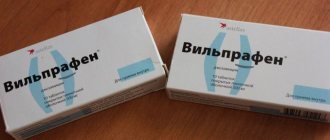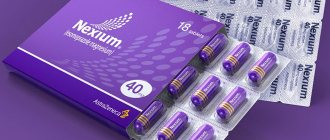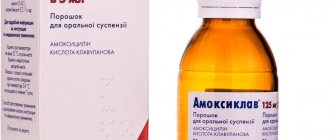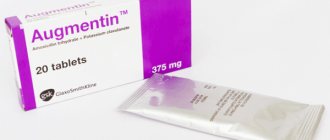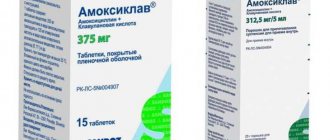Home | About us | Delivery | Advertisers | Login | Registration
- Medicines
- dietary supplementsVitamins
- Categories from A to Z
- Brands from A to Z
- Products from A to Z
- Medical equipment
- beauty
- Child
- Care
- Honey products appointments
- Herbs and herbal teas
- Medical nutrition
- Journey
- Making medicinesStock
Pharmacy online is the best pharmacy in Almaty, delivering medicines to Almaty. An online pharmacy or online pharmacy provides the following types of services: delivery of medicines, medicines to your home. Online pharmacy Almaty or online pharmacy Almaty delivers medicines to your home, as well as home delivery of medicines in Almaty.
my basket
Apteka84.kz is an online pharmacy that offers its customers medicines, medicinal and decorative cosmetics, dietary supplements, vitamins, baby food, intimate products for adults, medical equipment and thousands of other medical and cosmetic products at low prices. All data presented on the Apteka84.kz website is for informational purposes only and is not a substitute for professional medical care. Apteka84.kz strongly recommends that you carefully read the instructions for use contained in each package of medicines and other products. If you currently have any symptoms of the disease, you should seek help from a doctor. You should always tell your doctor or pharmacist about all the medicines you take. If you feel you need further help, please consult your local pharmacist or contact our GP online or by telephone.
© 2012 Pharmacy 84.
Klacid, 125 mg/5 ml, granules for the preparation of suspension for oral administration, 70.7 g, 1 pc.
The first data on pharmacokinetics were obtained from the study of clarithromycin tablets. The drug is quickly absorbed into the gastrointestinal tract. The absolute bioavailability of clarithromycin 50 mg tablets is approximately 50%. Food slightly delayed the onset of absorption and the formation of the active metabolite of 14-OH-clarithromycin, but did not affect the bioavailability of the drug.
In vitro
In in vitro studies, clarithromycin binding to plasma proteins averaged approximately 70% at clinically relevant concentrations ranging from 0.45 to 4.5 mcg/ml.
Healthy
The bioavailability and pharmacokinetics of clarithromycin suspension were studied in healthy adults and children. When administered once in adults, the bioavailability of the suspension was equivalent to or slightly greater than that of the tablets (both 250 mg dose). As with tablets, food slightly delayed the absorption of clarithromycin suspension but did not affect the overall bioavailability of the drug. Cmax, AUC and T1/2 of clarithromycin when taking the pediatric suspension (after meals) were 0.95 mcg/ml, 6.5 mcg h/ml and 3.7 hours, respectively, and when taking a 250 mg tablet on an empty stomach - 1.1 µg/ml; 6.3 µg·h/ml and 3.3 h.
When clarithromycin suspension was administered at a dose of 250 mg every 12 hours in adults, steady-state blood levels were practically achieved by the fifth dose. In this case, the pharmacokinetic parameters were as follows: Cmax - 1.98 μg/ml, AUC - 11.5 μg h/ml, Tmax - 2.8 hours and T1/2 - 3.2 hours - for clarithromycin and, accordingly, 0. 67; 5.33; 2.9 and 4.9 for 14-OH-clarithromycin. In healthy subjects, serum concentrations peaked within 2 hours after oral administration. Css of the main metabolite - 14-OH-clarithromycin - is about 0.6 μg/ml, and T1/2 when using the drug at a dose of 250 mg every 12 hours is 5-6 hours. When prescribing clarithromycin at a dose of 500 mg every 12 hours, Css 14-OH-clarithromycin is slightly higher (up to 1 μg/ml), and T1/2 is about 7 hours. When using both doses, equilibrium concentrations of the metabolite are usually achieved within 2–3 days. When clarithromycin is prescribed at a dose of 250 mg every 12 hours, approximately 20% of the dose is excreted unchanged by the kidneys. When used at a dose of 500 mg every 12 hours, approximately 30% of the dose is excreted unchanged by the kidneys. The renal clearance of clarithromycin is not significantly dose-dependent and approaches the normal glomerular filtration rate. The main metabolite found in urine is 14-OH-clarithromycin, which accounts for 10–15% of the dose (250 or 500 mg every 12 hours).
Sick
Clarithromycin and its 14-OH metabolite are well distributed into tissues and body fluids. Tissue concentrations are usually several times higher than serum concentrations. Table 1 provides examples of tissue and serum concentrations.
Table 1
Concentrations when administered at a dose of 250 mg every 12 hours
| Fabrics | Concentrations | |
| Tissue, µg/g | Serum, mcg/ml | |
| Tonsils | 1,6 | 0,8 |
| Lungs | 8,8 | 1,7 |
In children requiring oral antibiotic treatment, clarithromycin has high bioavailability. Moreover, its pharmacokinetic profile was similar to those in adults taking the same suspension. The drug is quickly and well absorbed in children. Food slightly delays the absorption of clarithromycin, but does not significantly affect its bioavailability or pharmacokinetic properties.
The steady-state parameters of clarithromycin pharmacokinetics achieved after 5 days (ninth dose) were as follows: Cmax - 4.6 μg/ml, AUC - 15.7 μg·h/ml and Tmax - 2.8 hours; corresponding values for 14-OH metabolite: 1.64 μg/ml; 6.69 mcg h/ml and 2.7 hours. Estimated T1/2 of clarithromycin and its metabolite are 2.2 and 4.3 hours, respectively.
In patients with otitis, 2.5 hours after taking the fifth dose (7.5 mg/kg 2 times a day), the average concentrations of clarithromycin and 14-OH metabolite in the middle ear were 2.53 and 1.27 μg/g. Concentrations of the drug and its metabolite were 2 times higher than their serum levels.
Liver dysfunction
Steady-state concentrations of clarithromycin in patients with impaired liver function did not differ from those in healthy subjects, while levels of 14-OH-clarithromycin were lower. The decrease in the formation of 14-OH-clarithromycin in patients with impaired liver function was, at least partially, offset by an increase in the renal clearance of clarithromycin compared with that in healthy subjects.
Renal dysfunction
The pharmacokinetics of clarithromycin also changed in patients with impaired renal function who received the drug orally at a dose of 500 mg repeatedly. In such patients, plasma levels, T1/2, Cmax, Cmin and AUC of clarithromycin and its 14-OH metabolite were higher than in healthy people. Deviations in these parameters correlated with the degree of renal failure: with more severe renal dysfunction, the differences were more significant (see “Dosage and Administration”).
Aged people
In a comparative study in elderly healthy subjects receiving repeat oral clarithromycin 500 mg, plasma levels of the drug were increased and elimination was slower compared with those in younger healthy subjects. However, there was no difference between the two groups when adjustment was made for creatinine Cl. It was concluded that changes in the pharmacokinetics of clarithromycin reflect renal function and not the age of the patient.
Patients with mycobacterial infections
Css of clarithromycin and 14-OH-clarithromycin in patients with HIV infection who received clarithromycin in usual doses in the form of tablets in adults and suspension in children were similar to those in healthy people. However, when clarithromycin is used in higher doses, which may be required to treat mycobacterial infections, antibiotic concentrations may be significantly higher than usual.
In children with HIV infection receiving clarithromycin at a dose of 15–30 mg/kg/day in 2 divided doses, steady-state Cmax values typically ranged from 8 to 20 mcg/ml. However, in children with HIV infection who received a clarithromycin suspension at a dose of 30 mg/kg/day in 2 divided doses, Cmax reached 23 mcg/ml.
When using the drug in higher doses, a prolongation of T1/2 was observed compared with that in healthy people receiving clarithromycin in usual doses. The increase in plasma concentrations and T1/2 duration when clarithromycin is prescribed at higher doses is consistent with the known nonlinearity of the pharmacokinetics of the drug.
Side effects
If the dosage of clarithromycin suspension is not observed, if the patient does not tolerate the drug well, or due to individual characteristics, side effects may occur. The manufacturer warns about the possibility of diarrhea and allergies. After taking the drug, an unpleasant bitter taste remains in the mouth for some time. With prolonged use, the likelihood of dysbiosis is high. In general, macrolides are considered the most gentle group of antibiotics, which is why they are widely used in the treatment of childhood diseases.
“Klacid”: features of the name
This drug is available in several forms and is widely used in modern pediatrics. The medication is effective against parasites that infect human cells. Once in the human body, the active component affects metabolic processes, preventing the production of protein in the bacteria’s body, which leads to the gradual extinction of the colony.
The effectiveness of Klacid has been proven against infection with Helicobacteria, Corynebacterium, Staphylococcus, and Neisseria. The medication shows good effectiveness against Haemophilus influenzae. In addition to gram-negative bacteria, Klacid destroys anaerobic and atypical pathogens and effectively fights infection with protozoa. Efficiency is due to the accumulation of the active component in the tissues of the body. "Klacid" shows results only when used in full course in accordance with the recommendations of the manufacturer or doctor. When using the medication independently without medical supervision, there is a possibility that bacteria will develop immunity to clarithromycin.
What to replace it with: Klabaks
"Klabaks" is a fairly popular broad-spectrum antimicrobial agent. This medication is based on the same active ingredient as the previously described Klacid. It is sold in tablets. Under the influence of Klabaks, proteins in bacterial bodies cannot be synthesized normally, which leads to the death of harmful microorganisms. "Klabaks" shows good results both with strains that do not produce beta-lactamase and with those that are capable of producing it.
When prescribing a medication, it is necessary to take into account the fact that clarithromycin rarely shows good results against microorganisms that are not afraid of oxacillin and methicillin. In order for the result of therapy to be satisfactory, before starting treatment it is necessary to take tests and check the sensitivity of microorganisms.
Helpful and effective
“Clarithromycin” helps to quickly overcome pneumonia, otitis media, herpetic sore throat, that is, severe diseases, often accompanied by complications if the treatment is incorrectly chosen. Only antibiotics give really good results for such pathologies, and for children, a clarithromycin suspension, sold under the name “Klacid,” is in quite high demand.
The medicine should be used only if there are recommendations from the attending physician with constant monitoring of the condition of the minor patient. Proper completion of the course ensures not only victory over the disease, but also prevention of complications. However, it should be understood that side effects are possible; clarithromycin suspension also has contraindications. It is important to know them; it is always possible that a sick child is included in the group of those who can use the drug only with special supervision from the treating doctor.
When to use?
Typically, Klabaks is prescribed for bacterial diseases if it has been determined that the pathogen is sensitive to clarithromycin. In most cases, these are microorganisms that provoke diseases of the upper respiratory tract: pharyngitis, otitis media. In addition, Klabaks is effective against pneumonia and bronchitis. The drug is used for skin infections and soft tissue infections. The product shows good effectiveness against urea, mycoplasmosis, and chlamydia. As an element of complex therapy, Klabax is used for leprosy, toxoplasmosis, and anti-Helicobacter therapy.
Dosage Features
When treating children under two years of age, the dose should include 2.5 ml of solution. For patients aged two to five years, the dosage is doubled - to 5 ml. When treating a child 4-8 years of age, the dosage is 7.5 ml. For the treatment of children aged 8-12 years, the solution is given in a volume of 10 ml. In each specific case, the doctor can adjust the dosage regimen relative to the standard one, focusing on the characteristics of the case and diagnosis.
Usually the duration of treatment is up to two weeks. As a rule, the doctor prescribes the drug and asks you to come with the child for a second appointment in a few days to monitor the effectiveness of the therapy. This allows you to determine the exact duration of the course in an individual case. With treatment for more than two weeks, additional side effects may occur, primarily dysbacteriosis.
What diseases does it treat?
Klacid treats respiratory infections in children:
- laryngitis,
- sinusitis,
- pneumonia,
- tonsillitis,
- pharyngitis,
- angina,
- whooping cough,
- bronchitis.
Prescribed for skin diseases:
- wound infection,
- furunculosis,
- abscesses,
- folliculitis,
- impetigo,
- mycosis.
Klacid tablets and suspension are effective in the treatment of otitis media, chlamydia, stomach and duodenal ulcers, and help with erysipelas. All of these diseases have dangerous consequences and complications if treated insufficiently or incorrectly.
Contraindications
Clarithromycin, like any other antibiotic, should not be taken at your own discretion. The instructions for the drug contain a number of conditions in which its use is strictly prohibited.
Contraindications to the use of Clarithromycin:
- liver and kidney diseases (severe forms);
- hepatitis;
- children under 12 years of age and weight from 33 kg (for tablet form);
- frequent intestinal disorders;
- syndrome of intolerance or improper absorption of glucose;
- intolerance to any component contained in this medication.
Ignoring contraindications can lead to serious problems for the patient, ranging from allergic reactions, gastrointestinal disorders, to severe heart failure and anaphylactic shock.
How can an overdose occur?
Accidental or intentional use of high doses of an antibiotic, often due to the fact that the patient independently decides to start antibiotic therapy or the drug is not accessible to children, can trigger an overdose.
Symptoms of an overdose can be side effects that manifest themselves in a vivid form with a deterioration in a person’s well-being.
Side effects:
- skin: the appearance of rashes, rashes, redness on the skin, accompanied by severe itching;
- invasions: development of thrush on the oral mucosa, in the genital area, erysipelas, catarrh of the intestines, stomach;
- heart and blood vessels: disruption of the heart, cardiac arrest, increased heart rate, hemorrhage, changes in electrocardiogram parameters;
- immune system: high sensitivity, the occurrence of pseudo-allergic reactions, the development of anaphylactic shock;
- circulatory and lymphatic systems: decrease in the volume of leukocytes, neutrophils, development of leukopenia, thrombocytopenia;
- metabolic processes: appetite disturbances, decreased glucose levels, the appearance of anorexia;
- Central nervous system: anxiety, sleep problems, disorientation in space, hallucinations, hearing impairment with the appearance of extraneous sounds;
- sensory organs: changes in the perception of tastes and smells, hearing loss (these reactions completely disappear after cessation of antibacterial therapy);
- Gastrointestinal organs: development of dyspeptic disorders, appearance of intestinal disorders, increase in liver enzymes, development of cholestasis, glossitis.
We recommend reading: Reducing fever: when will triad help and what does it contain?
Medicines: compatibility, replaceability
As clinical trials have shown, drugs based on clarithromycin combine well with other medications that eliminate the concomitant manifestations of those diseases for which this antibiotic is effective. You can safely combine “Klacid” and antipyretics, drugs for runny nose and cough.
Analogs of clarithromycin suspension for children are available in several names, but only the attending physician can choose the best option, taking into account both the diagnosis and the condition of the patient’s body. Quite often they resort to Klabax, Ecositrin, Fromilid. Usually replacement is made when an allergic reaction occurs.



